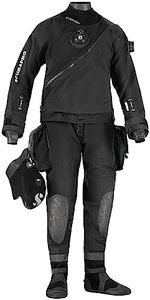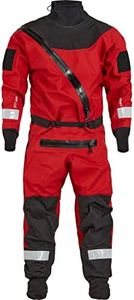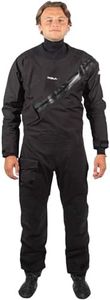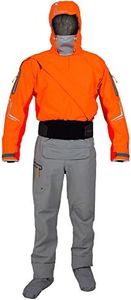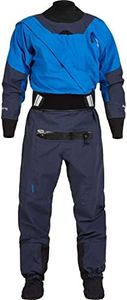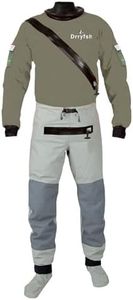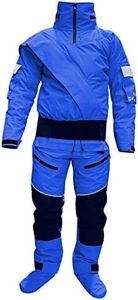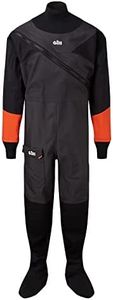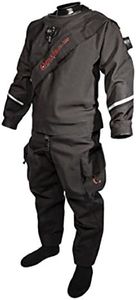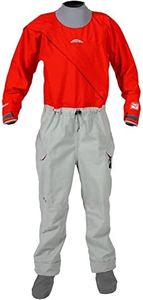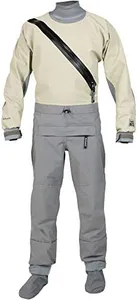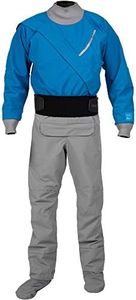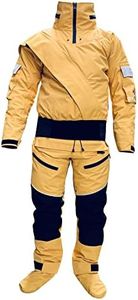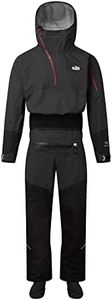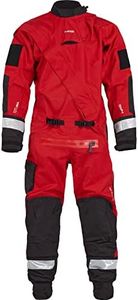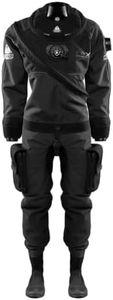10 Best Drysuits 2025 in the United States
Our technology thoroughly searches through the online shopping world, reviewing hundreds of sites. We then process and analyze this information, updating in real-time to bring you the latest top-rated products. This way, you always get the best and most current options available.

Our Top Picks
Winner
SCUBAPRO Evertech Dry Breathable Men's Drysuit (Large)
Most important from
5 reviews
The SCUBAPRO Evertech Dry Breathable Men's Drysuit is designed for divers who value both comfort and protection. Its breathable nylon and polyurethane construction ensures you stay dry while allowing perspiration to escape, which is a significant advantage for prolonged use. The high-quality stitched and waterproof seams, combined with the double-taped design, enhance reliability, making this suit well-suited for various water conditions.
A standout feature is the front diagonal BDM metal dry zipper. This watertight zipper simplifies the process of putting on and taking off the suit, which is a real time-saver for divers. The neoprene neck collar also adds a layer of comfort and helps keep the hood secure, especially when wearing gloves, which can often be tricky.
The attached semi-rigid boots are another highlight; they provide protective soles with excellent anti-slip capabilities, allowing you to walk comfortably on uneven surfaces. This is particularly beneficial for divers who may be entering or exiting through rocky or shell-laden areas. The suit is relatively heavy at 11.65 pounds, which might be cumbersome for some users, especially if they need to carry it over long distances. Additionally, being a hand-wash only product can be seen as a drawback for those looking for easy maintenance.
Most important from
5 reviews
NRS Ascent SAR Dry Suit-Red-GL
Most important from
2 reviews
The NRS Ascent SAR Dry Suit is constructed with a 3-layer TriTon fabric, known for its excellent durability and performance. This material is both waterproof and breathable, ensuring that the wearer stays dry and warm. The front entry YKK Aquaseal zipper is a notable feature, as it effectively prevents water from entering the suit, making it easy to put on and take off.
The cinchable neoprene neck closure is another strong point, providing a snug fit that keeps the neck area dry and warm. The suit also includes hook and loop patches on the shoulder, allowing for the addition of department badges, which could be particularly useful for search and rescue teams or other professional use cases.
Most important from
2 reviews
Buying Guide for the Best Drysuits
Choosing the right drysuit is essential for ensuring comfort, safety, and performance during water activities. Drysuits are designed to keep you dry in cold water conditions, making them ideal for diving, kayaking, and other water sports. When selecting a drysuit, it's important to consider several key specifications to find the best fit for your needs. Understanding these specifications will help you make an informed decision and ensure that your drysuit meets your specific requirements.FAQ
Most Popular Categories Right Now
